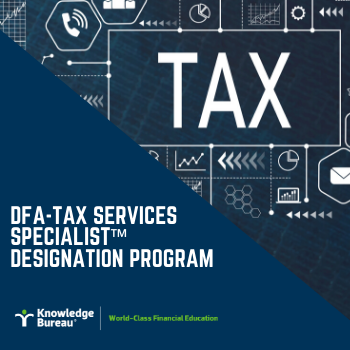Unprecedented Employment Rates: One Month Decline

Evelyn Jacks
The unemployment numbers released for March by Statistics Canada in a new weekly report are staggering. They provide a grave assessment of the current reality: swift unemployment is taking place across the country it's putting incredible stress on Canadians, especially for those in the core working years (aged 25 to 54). Financial education and tax-focused support is required and professionals in these industries need to be proactive. We offer 6 important ways to help.
Here are the details from Statistic Canada’s March unemployment report that highlight the swift repercussions to employment status as states of emergency were initiated between March 15 and 21. This report uses the March Labour Force Survey as a reference in that period, which recorded over 900,000 EI applications submitted. Note, however, that this report pre-dates the mandated closures of non-essential businesses that several provinces (including Ontario and Quebec) implemented later in the month. Some of the shocking statistics:
- Private sector faces the biggest loss. Employment fell by over one million in March (-1,011,000) with losses among private sector employees accounting for over 80% of the total decline.
- Part time workers feel the greatest impact. Overall losses were roughly split between full-time work (-474,000) and part-time work (-537,000).
- The 25-54 year olds are suffering. Employment among core-age persons fell by 426,000. The unemployment and employment rates in March were 6.6% and 80.2%, respectively.
- Unemployment rate rose to almost 8%. The national unemployment rate increased by 2.2%s in March to 7.8%.
- The employment rate fell below 60%. The percentage of the working age population that is employed, fell 3.3% to 58.5%.
These numbers are sobering, at best. According to Statistics Canada, this one-month decline in employment is unprecedented. It is approximately 2.5 times as large as the cumulative decline  in employment experienced during the 2008-2009 recession. It notes that from September 2008 to June 2009 overall employment fell by 400,000. At that time the unemployment rate rose from 6.1% to 8.7% and the decline in employment was primarily experienced by full-time workers and private sector employees, while the employment rate over this nine-month period declined from 63.4% to 61.3%.
in employment experienced during the 2008-2009 recession. It notes that from September 2008 to June 2009 overall employment fell by 400,000. At that time the unemployment rate rose from 6.1% to 8.7% and the decline in employment was primarily experienced by full-time workers and private sector employees, while the employment rate over this nine-month period declined from 63.4% to 61.3%.
What can tax advisors do to help? Here are the top three immediate actions to consider:
- T1 filings. Make sure you connect with all clients who haven’t filed a tax return yet to make the sure government can put refunds and tax credits into their hands quickly.
- Go back three years. Review and catch up on missed prior filed returns to recover missed refunds, create RRSP room and recover capital loss balances that may have been missed.
- Help clients apply for EI, the CERB and Disability Tax Credits. These are important services in stressful times. Consider providing tax detail on medical provisions and helping your clients or prospective new clients apply for the Disability Tax Credit for loved ones. This can include advice on the best way to claim new attendant care costs in 2020. Doing so as a public service for anyone with loved ones who are suddenly permanently disabled by the pandemic is an important way to participate in pandemic solutions.
How can financial advisors help? Top three things to consider:
- Help your clients stick to financial objectives for the long run. It’s a good time to do a financial plan, or revisit one. This matters when there are a series of Black Swans to deal with.
- Pay bills with tax-efficient funding. It’s a bitter pill to swallow when there is no money to pay bills due to unemployment or business closure. It’s even worse when withdrawals from the wrong account – an RRSP instead of a TFSA for example – bring a tax headache in 2020. Make sure you are pro-active in helping your clients sort out debt management.
- Have an RRSP strategy for EI benefits. If net income levels exceed $67,750 in 2020, EI will have to be repaid. An RRSP can reduce net income to below the clawback threshhold.Be sure you let your clients know this so you can help them plan to populate their RRSP room now.
Those are a few positive things tax and financial advisors can do to help proactively in unprecedented times. Do you have more good ideas? Let us know and we will share them.
Evelyn Jacks is Founder and President of Knowledge Bureau and best-selling author of 55 books on tax planning and family wealth management. Follow her on twitter @evelynjacks and linked in.
Additional educational resources. If you have never taken a professional tax course in the past, this is a good time to do so. Tax efficient investment strategies are critical in times like this. Consider the DFA-Tax Services Specialist™ designation program as an important credential in your professional toolkit.

COPYRIGHT OWNED BY KNOWLEDGE BUREAU INC., 2020.
UNAUTHORIZED REPRODUCTION, IN WHOLE OR IN PART, IS PROHIBITED.